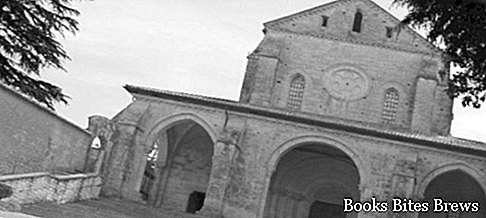What to see in Veroli, itinerary including the main monuments and places of interest, including the Church of Sant’Erasmo, the Cathedral of Sant'Andrea and the Abbey of Casamari.
Tourist information
Located in a hilly area, on a relief of the Ernici mountains, Veroli was annexed to the Roman duchy, then it became a bishopric.
Some sections of the walls relating to the pre-Roman city have remained, as well as part of the typical medieval village.
The Church of Sant Erasmus, erected in Romanesque style on the site of a monastery and rebuilt in the seventeenth century, retains the facade of the original building, including a three-arched portico, apses and bell tower.
In via Sulpicio, bordered by ancient buildings, the Renaissance Palazzo Aliprandi stands out.
Note the Medieval Royal House, where the Verulian Fasti can be seen walled up, a Roman calendar made of marble from the Augustan era.
The thirteenth-century Cathedral of Sant'Andrea, which was rebuilt in the eighteenth century, preserves the three-arched portico, the rose window, the bell tower and the apses of the ancient construction, the interior has three naves.
Next to it is the Cathedral Museum, which contains Byzantine, Arab-Sicilian and Abruzzese art objects, as well as sacred artifacts.
In the chapter archives there are ancient scrolls.
The Church of Santa Maria Salome, dating back to the thirteenth century and rebuilt several times, has an interior with three naves that preserves remarkable works of art.
What see
The most interesting excursions to do in the surrounding area include the Abbey of Casamari, located 9 km away.
Recommended readings- Anagni (Lazio): what to see
- Lazio: Sunday day trips
- Vetralla (Lazio): what to see
- Ciociaria (Lazio): what to see in the historic region
- Alatri (Lazio): what to see
The complex of the ancient monastery founded by Benedictine monks includes a Romanesque church.
The presence of the religious place made Casamari a center of great cultural influence, with increasing importance until the early 1400s, when it began to lose importance.
The abbey house, placed at the beginning, has the function of a guesthouse, while a courtyard precedes the church, with a simple but austere imprint, which rises on top of a staircase.
The façade is very particular, supported by lateral buttresses, with a rose window flanked by two mullioned windows and preceded by a three-arched portico, to admire the doors of the portal, made by Pietro Canonica.
In the interior with three naves it is possible to notice the typical pattern of Cistercian churches.
The interior of the church communicates with the cloister, characterized by an elegant porch with mullioned windows.
Through a portal it is possible to reach the Chapter Hall and, after passing through an entrance hall, the refectory, consisting of a long hall with two naves.
Some rooms house an interesting museum, where prehistoric and archaeological finds from the Roman period, works by Carracci Maratta and Guercino are exhibited.




